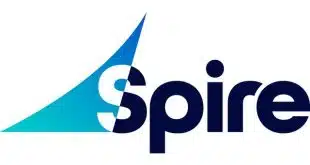Microsoft Corp. on Tuesday joined the mobile-payments race in earnest by announcing it is making near-field communication capability available on Microsoft Wallet for in-store transactions. The wallet works with Microsoft’s Windows 10 operating system.
The new payments feature is limited for now to members of Microsoft’s Windows Insiders program “in response to feedback from our customers and through the help of our partnerships with MasterCard and Visa,” according to a blog notice posted by Microsoft director of payments Will White. Insiders members help dry-run products before they become generally available. General release of the wallet will come “later this summer,” a Microsoft spokesperson tells Digital Transactions News.
The wallet will work at any U.S. merchant location equipped with NFC terminals, a number Microsoft is advertising as “more than a million places.” The rollout of EMV chip capability in the United States has led merchants to install terminals that are also NFC-capable. Visa Inc. recently said the number of EMV-accepting merchant locations had reached 1.2 million.
Issuing banks in the program include Bank of America Corp., BECU (Boeing Corp.’s credit union), JPMorgan Chase & Co., Fifth Third Bank, First Tech Federal Credit Union, People’s United Bank, U.S. Bank, and Virginia Credit Union, according to Microsoft. The wallet also stores membership and loyalty numbers.
The service is available initially on the Lumia 950, 950 XL, and 650 smart phones. The Redmond, Wash.-based computing giant acquired the Lumia line in 2013 when it bought Nokia Corp.’s handset business for $7.2 billion. While these devices command a small share of the smart-phone market, Windows 10 has been available for nearly a year across a wide range of other Microsoft devices. Microsoft Wallet has also had time to establish some familiarity with consumers, having been available since its introduction in November 2012.
A more formidable obstacle could be the head start rival device makers Apple Inc. and Samsung Electronics Co. Ltd. have enjoyed with similar NFC-based mobile-payments services. Apple Pay entered the market in the fall of 2014, while Samsung Pay launched nearly a year later. Apple Pay, along with Alphabet Inc.’s Android Pay, relies on NFC. Samsung Pay uses NFC but can also connect with ordinary mag-stripe terminals via a technology called magnetic secure transmission, which mimics a mag-stripe swipe.
According to the latest rankings from Reston, Va.-based Internet metrics firm comScore Inc., Microsoft had a 2.4% share of the U.S. smart-phone platform market in April, down 0.3 percentage points from 2.7% in January. Market leader Android widened its lead to 53.5% in April compared with 52.8% in January. Next was Apple’s iOS platform, with a 43.3% share, down slightly from 43.6% three months earlier.
Meanwhile, Windows 10’s market share is a matter of dispute. Computerworld in February cited federal-government data to peg it at 8.8%, but that includes both desktop and mobile platforms. Another metrics firm, NetMarketShare, estimates Windows 10’s share at 11.5%.
This isn’t Microsoft’s first payments gambit. In the spring of 2015, news emerged that the company had used a legal entity called Microsoft Payments Inc. to apply for money-transmission licenses with all 50 states and with the U.S. Treasury Department’s Financial Crimes Enforcement Network. Microsoft has refused comment on this move and it remains unclear what the company’s intentions are.





